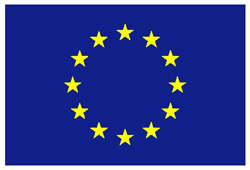Project Description
Objectives
The CIGN project aims to enhance the quality of training, improve trans-national recognition
of qualifications, and provide opportunities for skills training of professional staff.
Once disseminated through modular provision at each partner University, opportunities will
be created for students to engage with present and future needs of cross-media design
and production industries across Europe and beyond.
The CIGN project will also seek to identify communication strategies and appropriate
learning methodologies to allow for this to be implemented at local, regional, national
and international levels forming a lasting international network of stakeholders in
training professionals for cross-media design and production.
Summary
The applicants identified a requirement for modernisation of 'Cross-Media Design and Production'
modules following an extensive three-year Intensive Project, ICDC (http://www.designcamp.eu),
in their shared areas of practice and theory. The team proposed a new project to be
developed based on the findings of the ICDC project, and a recognition of the abilities
of the organizations to work collaboratively.
The objectives of the three-year Creative Industries Global Network (CIGN) project
included developing a lasting and sustainable international network between key Higher
Education Institutions, employer organisations and Sector Skills Alliance Partners,
(SSAP’s) to identify future skills gaps in ‘Cross Media Design and Production’; developing
innovative modular content, training activities and workshops and providing opportunities
for dissemination of this research using existing and developing media technology platforms.
Linköping University, (LiU) Sweden was the lead partner. Other partners included Stuttgart Media University, (HdM,) Germany, Artevelde University College Ghent (AhS), Belgium, and The University of the West of Scotland, (UWS), Scotland. A fifth, associated partner, Ryerson University (RU) Canada, was also involved in the project.
Project activities included an identification and consolidation of common areas of practice between partner institutions, and the development of staff training workshops in Stuttgart and Ghent. Management meetings occurred between partners and key industrial/sector skills alliance partners in order to provide training opportunities congruent with individual requirements including:
- Identifying opportunities for sharing and using new pedagogical methodologies for international cooperation
- Reviewing opportunities for participatory approaches to learning and teaching, including the implementation of distance and blended learning techniques
- Integration of new technologies applied to cross-media design and production
At the end of the first year, participants identified and developed modules across
the partner institutions. These spanned fields including International Cross-Media Design
and Production, Collaborative Projects, and Media Literacy among others.
During the second year, partners investigated opportunities for both local and inter-institutional
dissemination of findings. (These included engagement with international SSAP’s and awarding bodies.)
A second staff training workshop was held in Ghent exploring benchmarking and best practices
in learning, teaching and assessment. Partners continued to disseminate findings at international
educational design conferences and events. Opportunities were created to disseminate pilot
modules to the international student body via a series of short courses at partner institutions.
Modular titles (ECTS credit bearing) were offered to students and involved periods of staff
exchange and when possible, on-line and on-site student engagement (Erasmus exchange).
This targeted encouraging inter-institutional mobility, new modes of international
deliveries and the exchange of best and innovative practices in the areas of language,
culture, collaboration, creative/professional practice and employability.
Throughout years two and three CIGN partners disseminated project research findings at international educational design conferences and events.
In year three of the project, activities centered around revision/dissemination of
project findings and allowed for preparation of conclusive reports. Initially these
were distributed to all parties who were involved in the project, and through web and
social media platforms to future global collaborative partners.
The results of the project and resultant activities included the following:
- Intensified awareness of intercultural and international opportunities within subject areas,
- Increased recognition of entrepreneurial and employability opportunities
- Understanding of cultural differences when approaching practice-based solutions
- Investigation of collaborative practice in an international context
- Comprehension of international course credit points, validatory bodies and quality assurance systems

